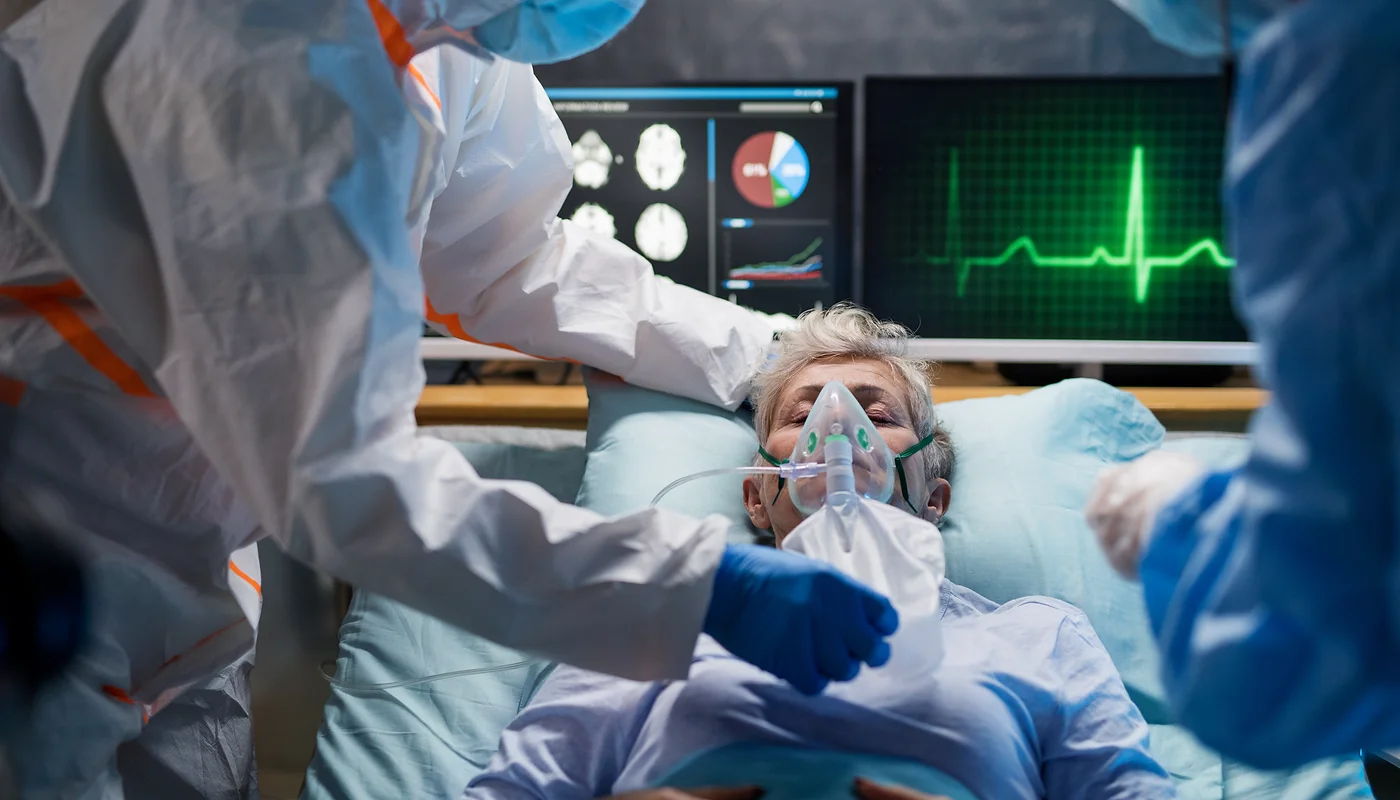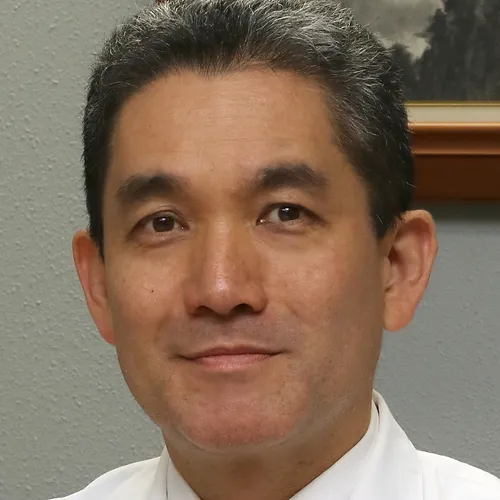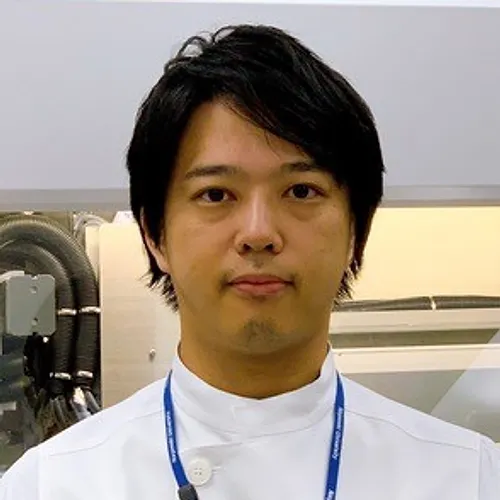
Education&ScienceWebinars
RESPIRATORY INFECTIONS BEYOND COVID-19: ROLE OF MULTIPLEXING AND DIAGNOSTIC STEWARDSHIP – WHERE ARE WE NOW?
Tuesday 25 October 2022
- 10:00 - 11:30 Indonesia time (UTC+7)
- 11:00 - 12:30 Singapore/Philippines time (UTC+8)
- 12:00 - 13:30 Japan time (UTC+9)
- 14:00 - 15:30 Sydney time (UTC+11)
- 15:00 - 16:30 Fiji time (UTC+12)
An educational initiative supported by Cepheid
This webinar has ended.

OUTLINE
This webinar provides a platform for respiratory health professionals across Asia Pacific to share their experiences on the emerging landscape of respiratory infections beyond COVID-19 and the need for us to be better prepared for an uncertain season ahead. Participants will have the chance to ask questions, discuss and hear perspectives from the speakers and panelists.
FORMAT
- Welcome and Introduction from the APSR (5 mins)
- Presentation-1 (15 mins)
- Presentation-2 (15 mins)
- Q&A (10 mins)
- Panel Discussion (30 mins)
- Q&A (10 mins)
- Closing Remarks (5 mins)
TOPICS
Talks:
“COVID-19 and Influenza: Intersections and Implications”- Dr Katsunori Yanagihara
“My journey in using respiratory multiplex testing and how it transformed my practice”- Dr Bryant R Boyd
Panel Discussion:
COVID-19 and Influenza Convergence: Potential ramifications and actionable insights for the respiratory season
SPEAKERS &PANELISTS

Dr Katsunori Yanagihara
SPEAKER
Professor and Chairman
Department of Laboratory Medicine, Nagasaki University Graduate School of Biomedical Sciences
Japan

Dr Bryant R Boyd
SPEAKER
Emergency Medicine Physician Willis-Knighton Health System, Bossier City, LA
USA

Dr Rodolfo Pagcatipunan Jr
PANELIST
Pulmonary Medicine Specialist Chair Council on Lung Infections Philippine College of Chest Physicians
The Philippines

Dr Agnes Rico-Mendoza
PANELIST
Professor 1 SLMC WHQM College of Medicine, Active Consultant Pediatrics & Pediatric Pulmonary Medicine SLMC QC and Institute of Pediatrics & Child Health
The Philippines

Dr Kenji Ota
PANELIST
Department of Laboratory Medicine, Nagasaki University Hospital
Japan

Dr Megan Rees
PANELIST
Consultant Physician Respiratory, Sleep and General Medicine, Royal Melbourne Hospital
Australia

Dr Yuanlin Song
MODERATOR
Head APSR Respiratory Infections (non-TB) Assembly
China

Dr Romy Ho
MODERATOR & CLOSING REMARKS
Director Medical Affairs, SEA, Cepheid

Dr David C L Lam
OPENING, CLOSING REMARKS
President APSR
Hong Kong
Adult RSV infections appears to has Re-Emerged during and after the 3rd Wave of COVID-19. True or False?
Dr Jonathan Chambers (Australia) responds:
They never left the building and were just hiding in the basement
Dr Ian Barr (Australia) responds:
This depends which contry and maybe even which state you are in. RSV has had outbreaks in NSW in Australia in the spring-summer of 2020 and then in winter in 2021 and now in winter 2022 while Victoria did not have an RSV outbreak in 2020 but did have one in summer-autumn in 2021 and is now having a winter outbreak in 2022 while Western Australia has had 2 summer outbreaks in 2020-21 and 2021-2. USA had a big outbreak in 2021 and so did Japan. Certainly the usual autumn-winter season of RSV has been disruped in many areas during COVID-19 but it hasnt been completely absent.
Do you have data about infection influenza and RSV in Covid 19 patients?
Dr Jonathan Chambers (Australia) responds:
no
I had soma cases with clinical symptom and CT scan as COVID-19, but PCR SARsCov2 2x, repeat after 24 hours were negative, and worsening in day 8, with high number of CRP, IL-6, PCT, and also D dimer. We didnt have other virus examination. Should we give antivirus ? Theres no risk for other infection
Dr Jonathan Chambers (Australia) responds:
The differential diagnosis for ground glass changes on a CT scan with ILI symptoms is broad. It also includes many non infective entities. There are many other respiratory virus that are not routinely tested for, some which may not have been discovered yet. Pre-covid it was not uncommon to have these patients. They will continue to appear post covid as well. I would suspect the utillity of antiviral therapies would be limited if you do not detect viral RNA there will be limited impact with therapies that limit replication by inhibiting RNA replication (which has not been detected).
Dr Ian Barr (Australia) responds:
Yes they do occur but are relatively infrequent <1%. Often it seems these are likely to be more dual detections rather than dual infections with COVIDS-19 having a high Ct (low viral load or just residual virus being detected) probably from an earlier infection and the other detection for RSV having a low Ct (high viral load) and this the virus that is causing the patient to seek medical help.
COVID Associated Mucormycosis during the 2nd Wave was a big challenge for all clinicians to handle.Why it was not there in the 1st Wave?
Dr Jonathan Chambers (Australia) responds:
This has not been a feature of the Australian experience. It is likely this was more of an issue in other countries, the cause/effect relationship has yet to be sufficiently explained
I have a case that I already using respiratory multiplex and I found adenovirus but when I check with whole genome sequensing with the same sample, I did’nt found adenovirus. Do you have explanation about that?
Dr Jonathan Chambers (Australia) responds:
WGS is an epidemiological tool / research tool. It has very little use in confirming diagnostic PCR results. Frequently WGS will fail on specimens when the CT value is not sufficiently strong. It is possible also that this was detecting weak old/historical Adenovirus DNA therefore the WGS just wouldn’t have worked. Most routine laboratories even reference laboratories wouldn’t WGS or even conventionally sequence Adenovirus unless there was a particular reason to do so.
I had a case with symptoms of COVID-19 at the second wave of COVId-19 in my country but PCR SARS Cov2 were negatives (2x). We performed respiratory multiplex testing with the result Influenza H1n1, how to manage?
Dr Jonathan Chambers (Australia) responds:
Like you normally would manage influenza. The management is dependant on the patients risk factors and recquirements. Influenza management is largely supportive, however, most patients recquiring admission in Australia will receive Tamiflu (or other antivirals depending on local availabillity) which may improve outcomes, but, is largely used for infection control benefits.
I want to know if the vaccine for Covid-19 we used one year ago is still effective for Omicron.
Dr Jonathan Chambers (Australia) responds:
antibodies generated as a result of vaccination with the 1st generation vaccines do neutralise Omicron when high titres are present. T cell response still occurs. Neutralisation is dramatically less than against the wuhan strain, however, the memory T cell response is likely to provide protection against severe disease/hospitalisation.
Dr Peter Wark (Australia) responds:
yes even x2 doses reduces severe complications but it needs to maintain adequate titre levels, so most need x3, older than 65yrs probably x4. Also there is increasing immune escape with BA4 and BA5
Dr Ian Barr (Australia) responds:
Yes the orginial Wuhan vaccine is still effective against Omicron in terms of preventing serious effect from infection with Omicron but may not stop infection
Why the guidelines for Pneumococcal Vaccination got modified in Jan 2022?
Dr Jonathan Chambers (Australia) responds:
Please ask your local jurisdictional vaccination ad service
Is it relevan to perform multiplex testing at the same time with SARS Cov2?
Dr Jonathan Chambers (Australia) responds:
Yes particularly when COVID-19 tests negative.
Dr Ian Barr (Australia) responds:
Yes this has been recommended by the Victorian Department of Health and others see health.vic.gov.au/health-advisories/testing-for-respiratory-pathogens.
How to detect mutations in covid 19 strain
Dr Jonathan Chambers (Australia) responds:
Mutations are detected through sequencing analysis
Dr Ian Barr (Australia) responds:
Full genome sequencing
How effective is Multiplex pcr respiratory panel
Dr Jonathan Chambers (Australia) responds:
This depends on the tests, however, most commercially available Influenza/RSV/SARS-COV2 multiplex PCR platforms are very sensitive and specific
Dr Ian Barr (Australia) responds:
Depending on the assay usually they are generally very good
I am seeing a lot of kids 5-12 years unimmunized with persistent cough with normal blood panels and no significant results? what can be the reason?
Dr Jonathan Chambers (Australia) responds:
This is a very common presentation. The differential diagnosis is broad and depends on local epidemiology. Suggest discussing with your local Paediatric Respiratory or Infectious Diseases physician’s
Moxifloxacin is there any place for CKD with Pneumonia
Dr Jonathan Chambers (Australia) responds:
Moxifloxacin has a role if used appropriately as per local guidelines. It is generally a 2nd line drug used when normal first line antibiotics like penicillins/Ceftriaxone are contraindicated due to severe Hypersensitivity/Anaphylaxis
Opportunities for remote health practice, where co-morbidities particularly diabetes and renal disease are common, and specimens may not reach the lab until 7 days after collection.
Dr Jonathan Chambers (Australia) responds:
This ti f very common presentation. After differential diagnotsis ti broad may depends he lab until 7 days after collection. local epidemiology. Suggest discussing diabetes your local Paediatric Respiratory ia Infectious Diseases physician’r
Dr Peter Wark (Australia) responds:
suggest use of RAT, but be prepared to repeat if clinical suspicion high
Dr Ian Barr (Australia) responds:
Use of rapid tests for SARS-CoV-2 or the Cephid GeneXperts (these area available for SARS-CoV-2 or for testing of SARS-CoV-2/influenza A/influenza B/RSV in the one cartridge/run and can allow testing even in remote sites,
Role of long term steroid in covid
Dr Jonathan Chambers (Australia) responds:
There is minimal evidence yet to recommend routine long term steriods.
Dr Peter Wark (Australia) responds:
none, no evidence and unless there is I would not do it.
Which are the best platforms for syndromic testing for respiratory pathogens?
Dr Jonathan Chambers (Australia) responds:
There are to many commercially available tests to answer this. Suggest discussing with your local clinical microbiologist or pathology service to determine what is available in your jurisdiction. Most validated commercial assays performed by a reputable NATA accredited pathology service (or equivalent) will perform very well.
Dr Ian Barr (Australia) responds:
Any that have TGA approval. These include AusDiagnostics, GeneXpert, various Roche platforms for PCR testing or TGA approved RAT tests for COVID-19.
Would you recommend the open platforms with multiplexing or cartridge/chip based for the same?
Dr Ian Barr (Australia) responds:
Depends on your throughput mostly. Cartidges are good for low throughput whereas 96/384 well PCR are best for high throughput RT-PCR assays.
What is about next COVID wave prediction?
Dr Jonathan Chambers (Australia) responds:
It is likely that COVID-19 will eventually become an endemic respiratory viral infection. Its long term characteristics are yet to be determined, but, it may become seasonal in a similar manner to other virus’s like influenza/RSV with similar genetic drifting.
Dr Ian Barr (Australia) responds:
I suspect Omicron subvariants will be with us for a while at least till the end of 2022
Is there any difference in treatment for patient who has co-infection of COVID-19+RSV or COVID-19+Flu? Is there any difference in prognosis for such patients?
Dr Jonathan Chambers (Australia) responds:
It is still difficult to know. In an adult there is no routine therapy recommended for RSV other than supportive therapy. For influenza if high risk Osiltamilvir and other influenza antiviral therapies will likely play a role. For both co-infections addition to whatever COVID-19 antiviral therapies are indicated and available locally will likely play a role
Dr Peter Wark (Australia) responds:
Psome evidence that prognosis may be worse, treatment none.
Is it possible that the 2021-2022 influenza virus strain has mutated or changed due to the COVID-19 pandemic? We are seeing many cases of flu in patients who received the flu vaccine
Dr Jonathan Chambers (Australia) responds:
The Influenza virus is subject to natural selection. Selective pressures will continue to change and mutate the virus. It will always be subject to well described genetic drift and shift. There is always a confirmation bias when making statements about seeing lots of “vaccine failures”, no one see’s “vaccine success” as by definition if it works we don’t see them. During periods of very high rates of influenza it is likely more vaccinated individuals will appear to be infected.
Dr Peter Wark (Australia) responds:
it does not appear to have, it is likely an effect of immunity having waned due to reduced exposure
Dr Ian Barr (Australia) responds:
Influenza viruses have been in what we call a bottleneck because of their low levels of circulation. IF anything this has reduced the number of influenza variants out there as only the most common variants look like they have survived the pandemic however the degree of evolution will increase now that influenza is spreading more widely for example in Australian in 2022.
have you seen patients with influenza and COVID-19 co-infection?
Dr Jonathan Chambers (Australia) responds:
Not in adults, and whilst I have seen dual detections on PCR in children, one of the virus has had significantly stronger detections.
Dr Ian Barr (Australia) responds:
Yes there are reported cases but again >1% however we may see more in Australia than have been reported to date as we have Omicron whereas other reports were during Delta waves with little influenza circulating. We have both in high circulation in Australia currently.
is there any difference in management if co-infection with flu viruses?
(awaiting answer)
is the mutation of COVId-19 (having different subvariant) may affect then epidemiology of the subtypes of influenza? (see previous similar question)
Dr Jonathan Chambers (Australia) responds:
The Influenza virus is subject to natural selection. Selective pressures will continue to change and mutate the virus. It will always be subject to well described genetic drift and shift. There is always a confirmation bias when making statements about seeing lots of “vaccine failures”, no one see’s “vaccine success” as by definition if it works we don’t see them. During periods of very high rates of influenza it is likely more vaccinated individuals will appear to be infected.
Dr Ian Barr (Australia) responds:
Very unlikely, both viruses are happy circulating and influenza types/subtype circualtion patterns are more to do with immunity levels to influenza and what viruses are imported first.
ıs there a triple rapid antigen test for covıd- rsv and influenza
Dr Jonathan Chambers (Australia) responds:
Not sure, but, wouldn’t use it unless it performed equally as well as the individual ICTs and was cheaper.
Dr Peter Wark (Australia) responds:
yes
Dr Ian Barr (Australia) responds:
Not for a RAT using lateral flow in Australia. There are dual lateral flow tests for influenza A/B and SARS-CoV-2 available in the USA and elsewhere but I don’t think they have RSV as well (yet). There are PCR “rapid PCR” tests eg GeneXpert that does influenza A/B, SARS-CoV-2 and RSV.
How much RAT’s test is used in WA?
Dr Jonathan Chambers (Australia) responds:
It is impossible to know as there is no notification system for all RATs performed. The WA government has supplied millions of tests to households, school children and healthcare workers.
Vulnerability may be further increased because people feel they have had enough immunisations, a kind of immunisation fatigue. Is there social sciences evidence to support this?
Dr Jonathan Chambers (Australia) responds:
Unsure, suggest literature review – this is not an area of expertise or interest.
is there any effect on influenza vaccine due to covid considering influenza patients are often misdiagnosed as covid thus weakening last 2 years influenza mutation database?
Dr Jonathan Chambers (Australia) responds:
Unsure what question is asking.
Dr Ian Barr (Australia) responds:
The main issue with COVID-19 has been getting enough influenza samples in 2020 and 2021 to get a good idea of what viruses are circulating and to prepare appropriate seed viruses for vaccine production. There is no such problem in 2022 as there are plenty of viruses available.
If we do wastewater based surveillance of these viruses do you think it’s can effectively identify the potential outbreaks?
Dr Jonathan Chambers (Australia) responds:
Not when thousands of people are excreting viral nucleic acid into sewage system.
Dr Ian Barr (Australia) responds:
Yes I think waste water monitoring is a useful addition to conventional screening and sentinel practices to detect the beginning of outbreaks and the emergence of new variants – there is a recent article in Nature on SARS-CoV-2 tracking in sewage see nature.com/articles/s41586-022-05049-6
Please advice if any role of Tamiflu in prevention of seasonal Flu? Many thanks.
Dr Jonathan Chambers (Australia) responds:
Suggest following local infection control guidelines. There is reasonable evidence for prophylactic Tamiflu for high risk patients following high level exposure.
Dr Peter Wark (Australia) responds:
There is evidence that Tamiflu can be used in high risk close contacts
Dr Ian Barr (Australia) responds:
Yes I think Tamiflu has a role to play in the ameloriation of symptoms from influenza infection (once a diagnosis has been made) provided its given within 48 hours of onset. Johnathan may have a view on its use.
Are we likely to see a return of supply chain disruptions and national allocations in the near future and what measure have vendors such as Cepheid implemented to mitigate such risks? Thank you.
Dr Jonathan Chambers (Australia) responds:
This question would best be answered by Cepheid. However, most private/public pathology companies have greatly diversified their molecular testing platforms. In the event of manufacturer issues or supply disruptions my laboratory has multiple unrelated suppliers of tests including for rapid PCR testing. In the event of disruptions we have pivoted away from that supplier even if it meant changing to a completely new platform.
Dr Ian Barr (Australia) responds:
Unknown!! Only Cephid can answer this question about their cartridges but many suppliers have ramped up their production capacity but may still have transportation issues.
The 4-plex mutplex POC test is 36 mins. Is that really long considering a wait is ED is usually hours. There are no RATs for mutliple respiratory infections at the momnt
Dr Jonathan Chambers (Australia) responds:
Whilst the test may take 36 minutes once its on the analyser. It is likely to take 30 minutes to an hour for the swabs to be collected, the swabs then have to be registered, processed, loaded when a channel is available (sometimes this could be 2 -96 or more depending on the lab). The test gets run, and may have an error recquiring repeating or may have a low level result again recquiring repeating. The result need to be reviewed by the scientist or lab assistant, then released/called through. All in all for a 36 minute test it is lucky if 50% of patients have a test result available in under 2 hours from arrival in ED , but, most will have a result in 4 hours. The biggest delay is getting the swabs collected and transported to the laboratory.
Dr Ian Barr (Australia) responds:
I think 36 min test is very fast. Multi-test RATs will become available in time in Australia (I hope). SARS-CoV-2 and influenza A/B RATS are currently available in the USA (eg Quidel” Sofia 2 Flu + SARS Antigen FIA and Roche SARS-CoV-2 & Flu A/B Rapid Antigen Test are available in several countries.




